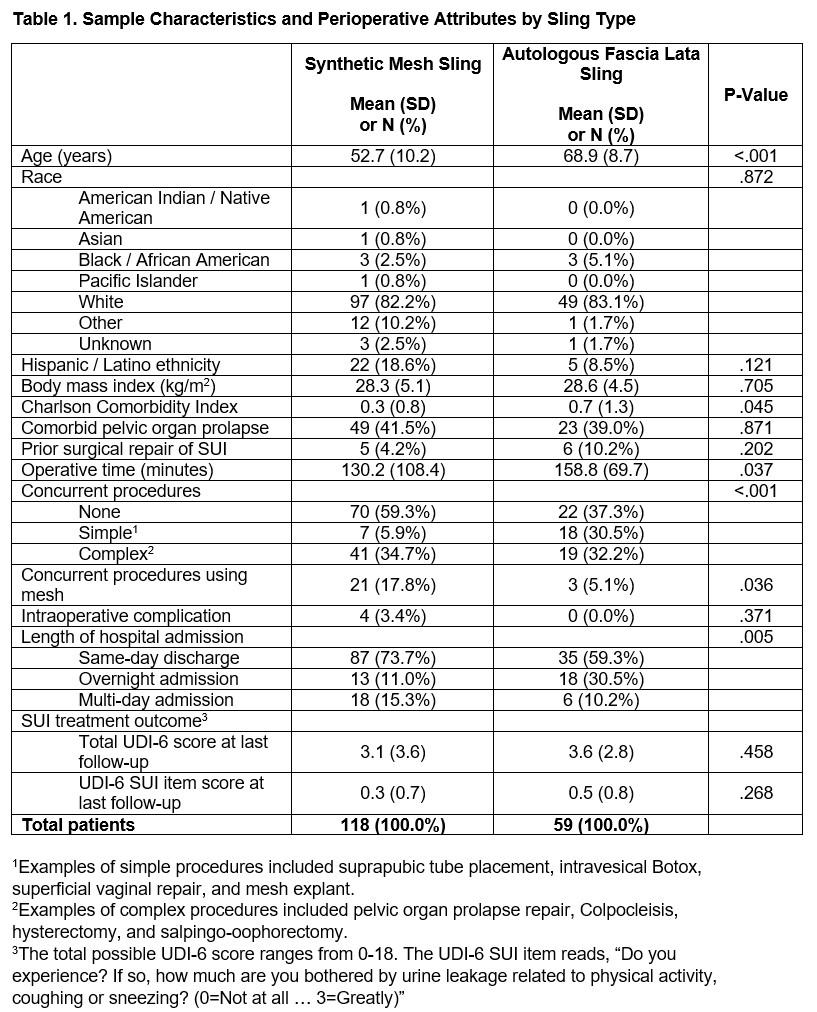Back to 2025 Abstracts
Synthetic Mesh Slings Versus Autologous Fascia Lata Slings for Stress Urinary Incontinence: A Single-Surgeon Retrospective Study
Aleksandra M. Golos, BS, Olamide Olawoyin, MD, Mary Grey Maher, MD.
Yale School of Medicine Department of Urology, New Haven, CT, USA.
Background: Autologous fascia lata slings (AFLS) represent less than 1% of slings placed for stress urinary incontinence (SUI). AFLS are indicated for high-risk patients and to avoid mesh-related complications seen with synthetic mesh slings (SMS). Our study compared SMS to AFLS for the treatment of symptomatic SUI.
Methods: We identified cases of SMS and AFLS performed by a single surgeon from 2012 to 2024, collecting perioperative data through chart review. SUI treatment outcomes were determined using Urinary Distress Inventory 6 (UDI-6) scores. Groups were compared using t-tests and Chi-square tests.
Results: Among N=177 patients, 118 received SMS and 59 received AFLS. The mean cost of mesh used for SMS was $1,118.45. Specific indications for AFLS included poor tissue integrity, prior mesh-related complications, and patient preference. Of note, patients receiving AFLS were significantly older, had higher Charlton Comorbidity Index scores, and underwent more concurrent procedures (Table 1). Among patients undergoing no concurrent procedures (n=70 SMS and n=22 AFLS), mean (SD) operative time was 72.9 (25.5) minutes for SMS versus 119.6 (28.1) minutes for AFLS (P<.001). In this subgroup, 67 (95.7%) SMS versus 20 (90.9%) AFLS patients were discharged on the day of surgery (P=.743). Postoperative UDI-6 scores were available for 69 (58.5%) SMS patients and 32 (54.2%) AFLS patients; outcomes did not significantly differ by group (Table 1).
Conclusions: AFLS is an underutilized treatment for SUI that may benefit older, more complex patients. Although AFLS is a longer procedure than SMS, it is associated with similar outcomes and hospital length of stay and can be performed outpatient. Furthermore, it avoids mesh-related complications and costs. Trainees should continue to gain experience with autologous fascial slings.

Back to 2025 Abstracts
